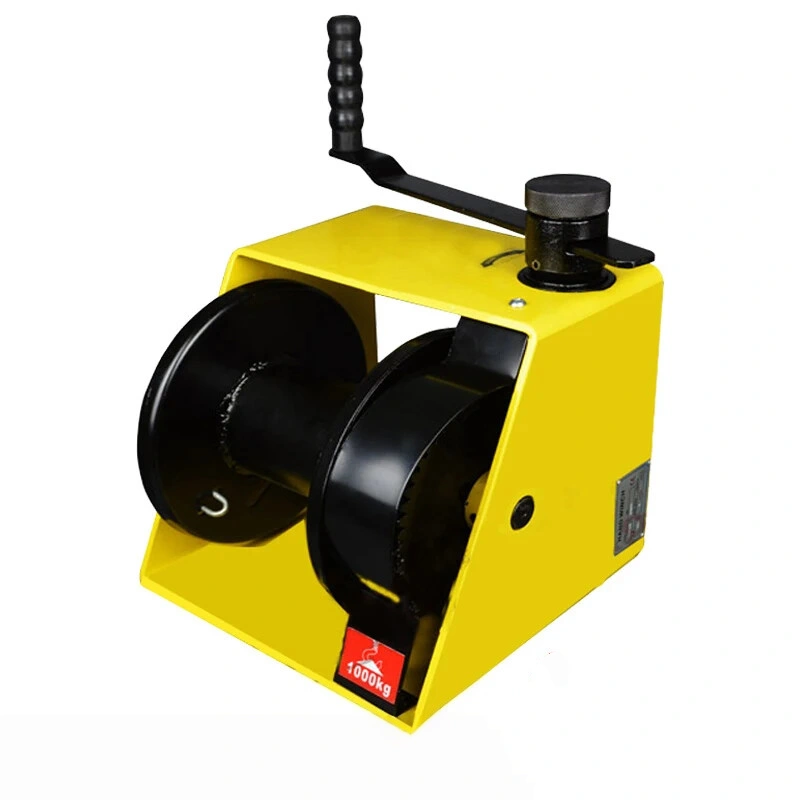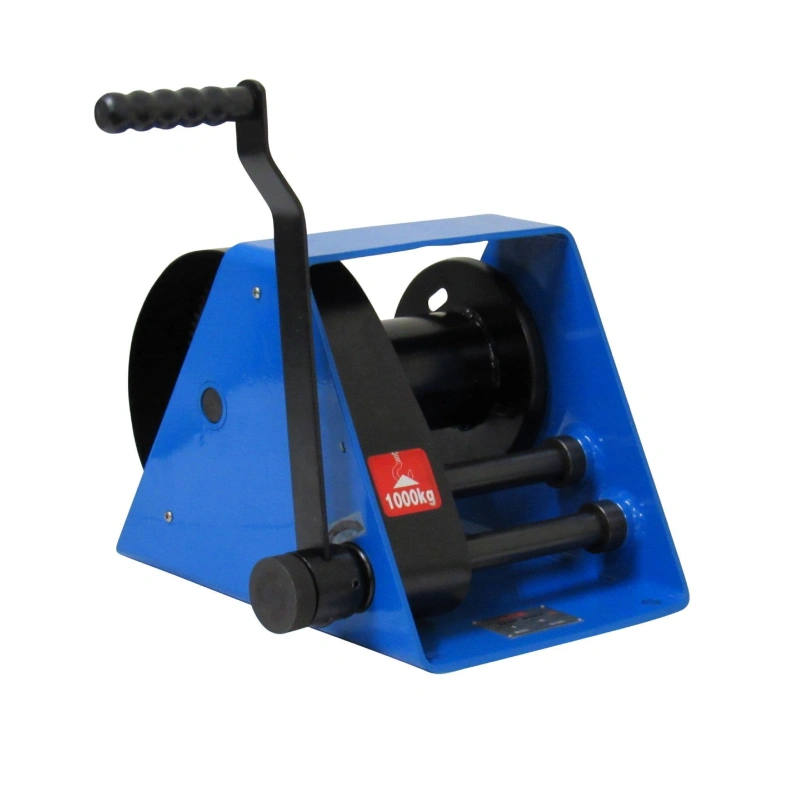You play a vital role in ensuring safety and efficiency when working with lifting and sling hooks. Selecting the right lifting hooks protects both your crew and your equipment. Certified hardware, such as that from Powerful Machinery, undergoes rigorous testing and meets international safety standards like OSHA and ASME.
Each lifting component includes a certificate of conformity, giving you confidence that your lifting operations stay compliant and secure.
Key Takeaways
Choosing the right lifting hook is crucial for safety and efficiency in rigging operations. Always assess the load and select a hook that meets the working load limit.
Familiarize yourself with different hook types, such as eye hooks, clevis hooks, and swivel hooks. Each type serves a specific purpose and enhances lifting performance.
Use certified hooks from trusted suppliers like Powerful Machinery. Certified products ensure compliance with safety standards and reduce the risk of equipment failure.
Regularly inspect and maintain your lifting hooks. Conduct checks before each use and schedule detailed inspections to ensure reliability and safety.
Invest in training programs for rigging safety. Proper training helps prevent accidents and ensures that all team members understand best practices for using lifting hooks.
Types of Lifting and Sling Hooks
When you work with lifting and sling hooks, understanding the different types is essential for safe and efficient rigging. Each hook serves a unique purpose, and choosing the right one ensures your lifting operations meet industry standards.
Below, you will find an overview of the most common lifting hook types, their primary uses, and how certified, high-quality hooks from Powerful Machinery can support your needs.
Eye Hooks
Eye hooks feature a rounded eye at the top, allowing you to attach them securely to chains, ropes, or slings. You often use these hooks for permanent connections in overhead lifting and rigging equipment.
Their design makes them versatile for suspending loads, and you can find them in configurations such as swivel eyes or self-locking eyes. If an eye hook becomes damaged, you must remove the entire sling, which adds a layer of safety by preventing accidental reuse of compromised hardware.
Tip: Powerful Machinery offers a range of eye hooks engineered for durability and compliance, making them a reliable choice for your lifting operations.
Clevis Hooks
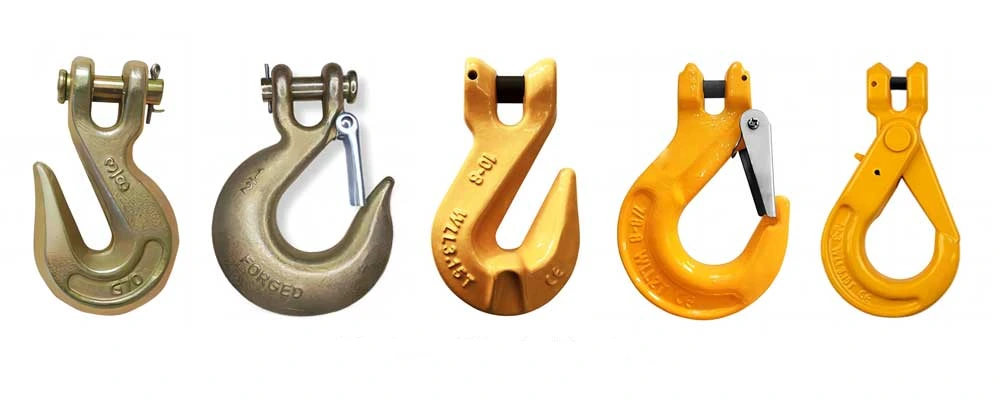
Clevis hooks have a U-shaped attachment point with a removable pin, making assembly and disassembly quick and easy. You can replace them without removing the entire sling, which adds flexibility to your rigging setup.
Clevis hooks are suitable for overhead lifting when marked as Grade 80 or higher. Safety latches are recommended to prevent accidental disengagement.
Feature | Clevis Hooks | Other Hook Types |
|---|---|---|
Attachment Point | U-shaped with a removable pin | Rounded (eye hooks) |
Assembly | Quick assembly and disassembly | Varies, often less convenient |
Overhead Lifting | Yes, if marked Grade 80 or higher | Varies, often specific to type |
Safety Features | Ability to pivot, safety latches recommended | Varies, may not have latches |
Powerful Machinery’s Clevis Grab Hook stands out for its robust construction and secure attachment, making it ideal for heavy-duty applications.
Swivel Hooks
Swivel hooks allow the load to rotate freely, preventing twisting and reducing stress on your rigging hardware. You benefit from 360-degree rotation, which helps distribute forces evenly and minimizes wear on lifting components.
Swivel hooks are essential when you need to manipulate or align loads during lifting, especially in dynamic environments.
The ball bearing mechanism enables smooth rotation under full load.
Swivel hooks help prevent sling twists and load imbalance.
Powerful Machinery’s stainless steel hooks include swivel eye designs, offering flexibility and corrosion resistance for marine and industrial applications.
Grab Hooks
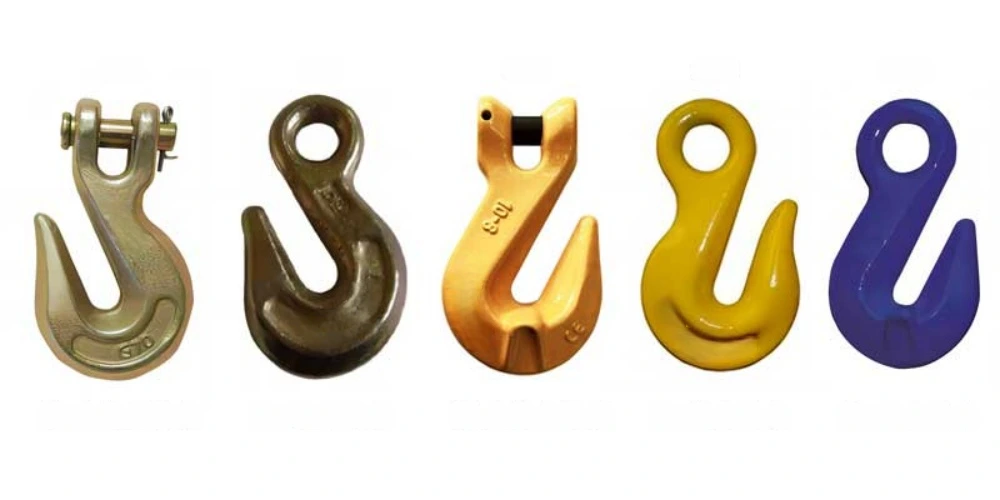
Grab hooks have a narrow throat designed to securely hold a specific link of chain. You use them for chain applications, such as shortening or binding loads. The design prevents the chain from slipping through the hook, giving you precise control during lifting.
Grab hooks are common in construction, transportation, and cargo handling.
Note: The Clevis Grab Hook from Powerful Machinery is engineered for Grade 43 chains, providing secure load control and long-term durability.
Slip Hooks
Slip hooks feature a wider throat, allowing the chain or sling to move freely through the hook. You can quickly adjust or remove slip hooks, making them ideal for applications that require frequent changes. Unlike fixed hooks, slip hooks offer greater flexibility in dynamic rigging setups.
Clevis slip hooks are perfect for situations where you need to make fast adjustments.
They are commonly used in towing, logging, and load securing.
Self-Closing Hooks
Self-closing hooks, sometimes called self-locking hooks, have a latch that automatically closes when you apply a load. This mechanism prevents accidental detachment, ensuring the hook remains securely attached during lifting. You benefit from enhanced safety, especially when working at height or with overhead loads.
The latch snaps shut under load, locking the hook in place.
Self-closing hooks are critical in environments where safety is a top priority.
Self-Locking Hooks
Self-locking hooks take safety a step further by automatically closing and locking when loaded. You reduce the risk of accidental disengagement, which is vital for overhead lifting. These hooks help prevent load drops and injuries, making them a preferred choice in construction and industrial settings.
Self-locking hooks provide peace of mind during critical lifting operations.
They are often used in conjunction with high-quality hooks from certified suppliers like Powerful Machinery.
Automatic Hooks
Automatic hooks incorporate advanced features that improve comfort, efficiency, and safety. You can attach and release loads with minimal manual intervention, reducing physical strain and human error. These hooks enhance precision and control, optimizing your lifting process.
Feature | Impact on Lifting Efficiency |
|---|---|
Greater comfort and convenience | Reduces physical strain on operators, improving workplace comfort. |
Efficiency and precision | Enhances control during lifting, minimizing load damage, and optimizing resource use. |
Greater safety | Secures load attachment, reducing human error and accident risk. |
Foundry Hooks
Foundry hooks are designed for high-temperature environments, such as foundries and steel mills. You use them where standard hooks might fail due to heat exposure.
Foundry hooks typically lack latches, allowing for quick release in emergencies. They require regular inspection for signs of oxidation, corrosion, or deformation.
G80 foundry hooks can withstand temperatures up to 400°C (752°F).
Always consult the manufacturer for specific temperature ratings and maintenance guidelines.
Sorting Hooks
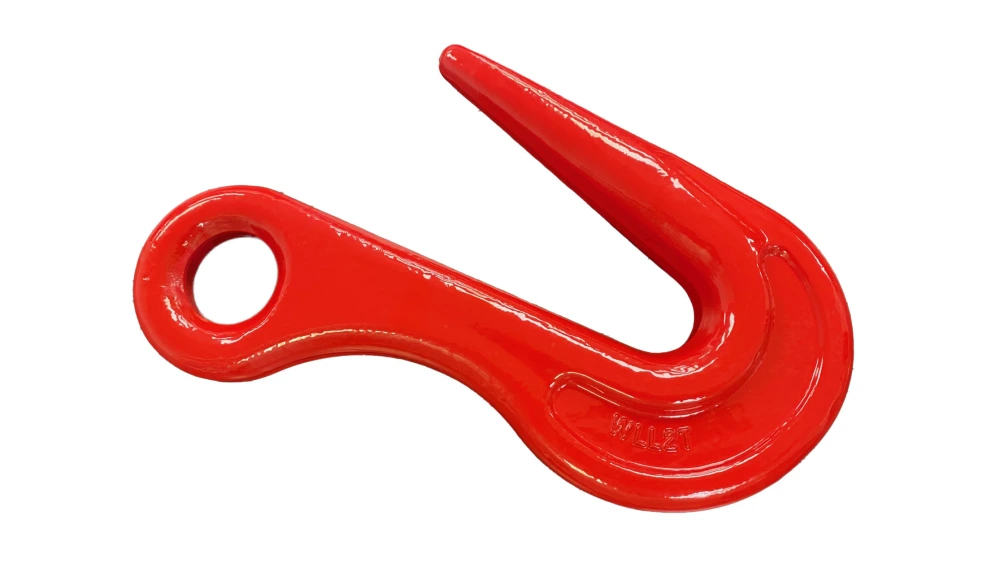
Sorting hooks, also known as lay out or shake out hooks, are essential when you need to sort and organize materials like flat plates, pipes, or tubes. You often use them in multi-leg sling assemblies, ensuring the load fully engages with the hook’s throat.
Sorting hooks provide precise control during material handling and are common in manufacturing and fabrication shops.
J-Hooks
J-hooks have a slim profile, making them suitable for lifting in tight spaces. You can use them for lighter loads where space constraints prevent the use of larger hooks. Their design allows for easy attachment and removal, but you should always check the load limit before use.
Barrel Hooks
Barrel hooks, also called drum hooks, are specialized for lifting barrels and drums. You must ensure the hook attaches securely to the barrel, especially when lifting by the handles. Lift the barrel slowly and steadily, and consider using a barrel lifting clamp for added stability.
When lifting multiple barrels, balance the load and verify the lifting device’s capacity.
Specialty Hooks
Specialty hooks address niche applications in industrial lifting. You might use plate hooks for lifting steel plates or carpet hooks for handling rolls of flooring. C-hooks are designed for coils and rolls, commonly found in the steel, aluminum, and paper industries.
These hooks minimize material damage and often include safety features tailored to specific tasks.
Remember: Using certified, high-quality hooks from trusted brands like Powerful Machinery ensures your rigging hardware meets international safety standards. This commitment to quality protects your team and your investment, no matter the application.
Features and Applications of Lifting Hooks
Key Features of Lifting Hooks
When you select lifting hooks, you need to consider the materials, design, and safety mechanisms. Manufacturers use several types of steel to ensure strength and durability. The table below highlights common materials and their impact on performance:
Material Type | Characteristics | Durability Impact |
|---|---|---|
Low-carbon killed steel | High-quality, sensitive to cracks and defects | Ensures safety and reliability during lifting operations |
Low-carbon alloy steel (DG20, DG20Mn, DG34CrNiMo) | High strength and good plastic toughness due to forging and stamping processes | Enhances strength and toughness, reducing the risk of failure during use |
A3, 20, or 16Mn steel sheets | Thickness of not less than 20 mm, high reliability | Fractures are limited to individual plates, allowing for continued support of weight |
You benefit from forged and heat-treated steel, which increases the lifespan of your rigging hardware. Safety mechanisms, such as latches and locking systems, help prevent accidental disengagement during any lifting application.
Applications of Sling Hooks
You will find lifting and sling hooks in a wide range of industries. Typical applications include:
Construction sites for moving heavy materials
Forging facilities for handling hot metal parts
Automotive plants for assembly line lifting
Steel mills for transporting large steel components
Oil and gas operations for equipment handling
General manufacturing for daily material movement
Powerful Machinery’s Clevis Grab Hook, Hooks, and Stainless Steel Hooks support these applications by providing reliable performance in demanding environments. You can trust these hooks for any lifting application, whether you use lifting slings or chains.
Advantages of Powerful Machinery Hooks
You gain several benefits when you choose Powerful Machinery hooks. The Clevis Grab Hook offers secure load control and a corrosion-resistant finish, making it ideal for outdoor and marine applications.
The Hooks range provides compatibility with Grade 80 and Grade 100 chains, ensuring you meet the needs of any application. Stainless Steel Hooks deliver exceptional resistance to rust, which is critical for marine and industrial use. You can select from a variety of sizes and designs to match your lifting efficiency requirements.
Tip: Powerful Machinery hooks undergo rigorous testing to meet international standards, giving you confidence in every lifting operation.
Safety Latches and Compliance
Safety latches play a vital role in protecting your team and your load. Regulatory bodies such as OSHA and ASME require or recommend the use of latch-equipped hooks in most situations. The table below summarizes key regulations:
Regulation | Description |
|---|---|
OSHA 1910.181(j)(2)(ii) | States that safety latch-type hooks shall be used wherever possible. |
OSHA General Duty Clause (5(a)(1)) | Requires employers to protect employees from recognized hazards, which can include the absence of safety latches. |
ASME 30.2-2011 | Recommends the use of latch-equipped hooks unless impractical. |
You should always verify that your lifting hooks comply with these standards. Powerful Machinery designs every hook to meet or exceed these requirements, ensuring your rigging hardware supports safe and compliant lifting operations.
How to Select Lifting and Sling Hooks?
Selecting the right lifting hooks for your rigging operations requires careful evaluation of several factors. You must consider the load, working load limit (WLL), compatibility with lifting slings, environmental conditions, and compliance with safety standards.
The right choice ensures safe, efficient, and compliant lifting in every application.
Assessing Load and Working Load Limit
You need to start by understanding the weight and characteristics of the load. The working load limit is the maximum weight a hook can safely handle. Never exceed this limit. To ensure safety and reliability, follow these best practices:
Adhere to WLL guidelines for every lifting application.
Provide operator training to prevent accidents and ensure proper use.
Perform proof load testing to verify the hook’s strength under heavier loads.
Conduct regular inspections and maintenance, including daily checks and scheduled reviews.
Use custom forklift attachments when necessary to improve safety during lifting.
A clear understanding of lifting capacity and WLL helps you avoid overloading and reduces the risk of equipment failure.
Matching Hook Type to Application
Each hook type serves a specific purpose. Choosing the correct hook for your application reduces the risk of rigging failure and improves efficiency. Consider these points:
Select the hook designed for your intended application. For example, use grab hooks for chain shortening or slip hooks for adjustable connections.
Avoid using the wrong hook type, as this can cause load failure or accidents.
Match the hook’s form and material grade to the demands of your task.
Understand the load’s weight, size, shape, and center of gravity.
Identify the best lifting method, such as attaching through an eye or clamping the sides.
Tip: Using the right hook for each application ensures safe, efficient, and reliable rigging operations.
Environmental and Industry Considerations
Environmental factors can affect the performance and safety of your rigging hardware. You must evaluate the conditions where you will use the hooks:
Temperature: Extreme heat can soften metals, while cold can make them brittle. Both conditions impact strength and performance.
Humidity and Corrosion: High humidity can cause corrosion, weakening metal hooks, and risking failure.
Dust and Debris: Particles can jam moving parts, reducing functionality and safety.
Choose hooks with corrosion-resistant finishes or stainless steel construction for marine or outdoor environments. Always check the manufacturer’s recommendations for temperature and environmental limits.
Choosing Powerful Machinery Products
Powerful Machinery offers a wide range of hooks to meet your specific needs. To select the right product, follow these steps:
Understand your application requirements. Determine if you need hooks for construction, marine, transportation, or another industry.
Evaluate the load characteristics, including weight, size, and shape.
Ensure compatibility with your crane, lifting slings, or other rigging equipment.
Consider safety features such as locking mechanisms or corrosion-resistant coatings.
Confirm that the product meets compliance and safety standards.
The table below helps you compare Powerful Machinery hook options for different applications:
Application | Recommended Hook Type | Key Features |
|---|---|---|
Heavy-duty cargo binding | Clevis Grab Hook | Secure load control, corrosion resistance |
General lifting | Hooks (Eye, Clevis, Slip) | High-strength steel, locking mechanisms |
Marine or outdoor use | Stainless Steel Hooks | Rust resistance, swivel eye design |
Custom or high-demand | Custom-engineered hooks | Tailored to project requirements |
For specialized or high-demand applications, consult with Powerful Machinery experts or your supplier. They can help you select or customize the ideal hook for your lifting application.
Safety and Compliance for Lifting Hooks
OSHA and ASME Standards
You must follow strict safety standards when working with lifting hooks. OSHA and ASME set clear guidelines to protect you and your team. The table below highlights key standards that govern lifting hooks and related devices in the United States:
Standard | Description |
|---|---|
ASME BTH-1 | Design criteria for below-the-hook lifting devices, including load stresses. |
ASME B30.9 | Guidelines for lifting slings, covering design, construction, and marking. |
ASME B30.20 | Standards for structural and mechanical lifting devices and service classes. |
You should always verify that your rigging hardware meets these standards before starting any project.
Inspection and Maintenance
Regular inspection and maintenance keep your lifting hooks safe and reliable. You need to check hooks before each use for damage or wear. Schedule annual inspections under normal conditions.
If you work in harsh environments or use hooks frequently, inspect them every six months or quarterly. The table below summarizes recommended inspection intervals:
Inspection Frequency | Conditions |
|---|---|
Before each use | Quick visual check for damage |
At least annually | Normal service |
Every six months or quarterly | Severe service or harsh environments |
Promptly remove any hook that shows signs of deformation, cracks, or corrosion.
Importance of Certified Products
Certified lifting hooks protect you from unexpected failures. When you choose certified products, you gain:
Safety and reliability during lifting operations.
Assurance that hooks withstand specified loads.
Materials designed to prevent sudden failure.
Proof load testing certificates and compliance with safety standards.
Powerful Machinery provides hooks that meet or exceed international certifications, including ISO9001, TUV Rheinland, and OSHA. You can trust their products for critical lifting tasks.
Training and Best Practices
Proper training ensures you use lifting hooks safely. You should complete programs such as Basic Rigging, Intermediate Rigging, and Advanced Rigging. Earning a Rigging Certificate validates your skills. Recommended training programs include:
Training Program | Duration | Class Size | Key Focus Areas |
|---|---|---|---|
Lift-It® Sling Safety Program | 2-3 days | N/A | Accident prevention, sling usage, and inspection |
Sling User Training | 4-8 hours | 50-75 | Sling materials, designs, and inspection systems |
Designated Synthetic Sling Inspector | 4-8 hours | 25 | Inspection per ASME B30.9, OSHA 1910.184 |
Advanced Rigging Training | 4 hours | 25 | Weight calculations, load moment calculations |
Train-the-Trainer Program | 16 hours | 20 | Rigging hardware types, inspection exercises |
You should also focus on selecting suitable equipment, inspecting gear before use, balancing loads, mastering techniques, and communicating clearly on site.
Tip: Consistent training and strict adherence to safety standards help you prevent accidents and maintain compliance in every lifting operation.
Conclusion
You strengthen your rigging operations when you understand hook types, features, and selection criteria. Choosing certified, high-quality hooks from Powerful Machinery delivers lasting benefits:
Benefit | Description |
|---|---|
Safety | Reliable load control protects your team and equipment. |
Durability | Robust design withstands harsh conditions for long-term use. |
Efficiency | Streamlined workflow reduces downtime and boosts productivity. |
Sourcing equipment from knowledgeable suppliers ensures safe lifting.
Experts help you select the right hooks and recommend best practices.
For ongoing safety and compliance, consult with rigging professionals or explore Powerful Machinery’s product range. Stay committed to safe lifting and continuous learning.
FAQ
What is the difference between a grab hook and a slip hook?
A grab hook holds a specific chain link in place, which helps you shorten or secure loads. A slip hook has a wider throat, allowing the chain or sling to move freely for quick adjustments.
How do you know if a lifting hook is certified?
You should check for markings or certificates from recognized organizations like OSHA, ASME, or ISO. Powerful Machinery provides certification documents with every product, so you can verify compliance before use.
Can you use stainless steel hooks in marine environments?
Yes, you can use stainless steel hooks in marine environments. Their corrosion resistance makes them ideal for saltwater, humidity, and outdoor applications. Powerful Machinery’s stainless steel hooks offer reliable performance in these conditions.
How often should you inspect lifting hooks?
You should inspect hooks before each use. Schedule a detailed inspection at least once a year. If you work in harsh or high-frequency environments, inspect every six months or quarterly.
Where can you get expert advice on choosing the right hook?
You can contact Powerful Machinery’s technical team or visit our website for expert guidance and product recommendations tailored to your lifting needs.

